
TARGET 070613
How far can YOU throw a telephone pole?
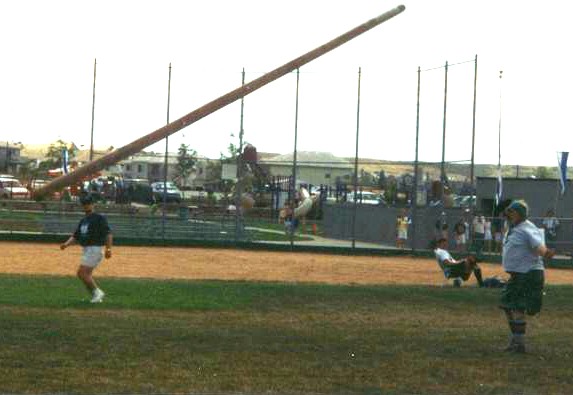
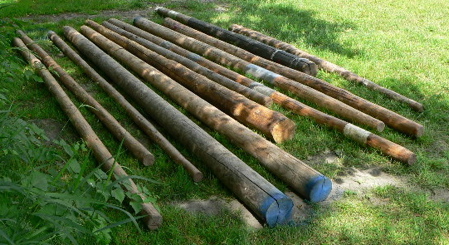
There are no uniform standards for cabers specifying length, weight, type of wood, density, circumference, etc. In general, the cabers used in competitions vary in all these characteristics with each Highland Games event having their own set of cabers. Typically, a Highland Games event will have several cabers varying in length and weight, with the longer, heavier implements being used for the Professional or top class event and the shorter, lighter cabers being used for either qualifying for the top class or for the Amateur class. Others, shorter and lighter yet, might used for the women's and junior classes if the Games event features such competitions. The photograph above shows a group of cabers from the 2005 Bellingham Highland Games.
The size, and particularly the length, of the caber means that enormous strength is required simply to balance it vertically, and even more is required to toss it. For competitions involving less skilled athletes a shorter and/or lighter caber is used. It is not unusual for a caber to break in the course of a competition.
To toss the caber, the thrower first cups his or her hands together. The caber is then held vertically with the 'bottom' end in the thrower's cupped hands. The caber is rested against the shoulder and gripped with hands clasped around it with interlocking fingers. Because more that 80 percent of the caber's weight is above the thrower, balance is crucial.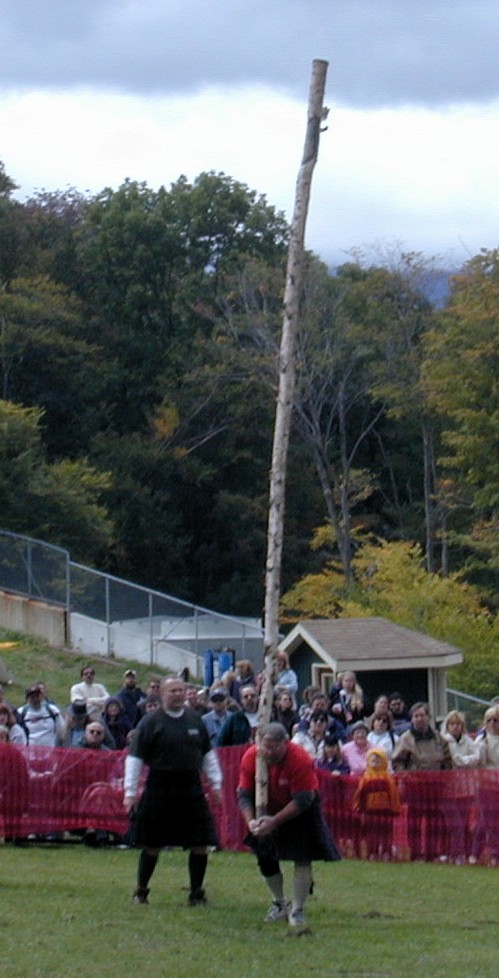
Picking it up is more than some people can do.
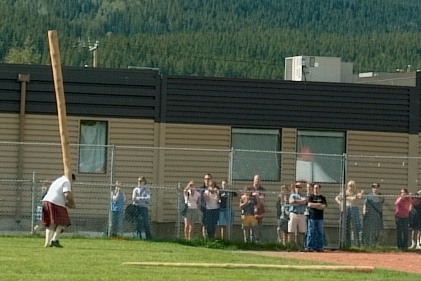
Continuing to hold the caber vertically (which requires a good deal of careful balance), the thrower runs forward ......

...and tosses the caber into the air.....
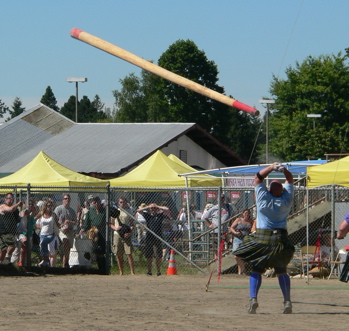
........so that it turns 180° end-over-end in the air.....
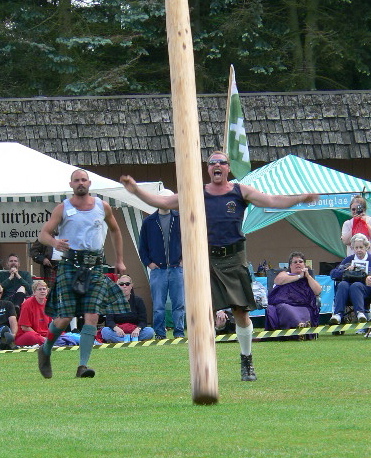
.....and (hopefully) lands on the former 'top' end. Because the caber still has angular momentum, the former 'bottom' end then (hopefully) falls forward and away from the thrower.
The object of the game is not the distance of the throw, but rather to have the caber fall directly away from the thrower after landing. A perfect throw ends with the 'top' end nearest to the thrower and the 'bottom' end pointing exactly away. If the throw is not perfect, it is scored by viewing the caber as though it were a hand on the clock. The ideal position is 12:00. A caber pointing to 11:00 would yield a better score than one pointing to 10:30. If the caber lands on its end and falls back towards the thrower, the score is lower than for any throw that falls away from the thrower but will be based upon the maximum vertical angle that the caber achieved. An angle of 87° is better than 75°. It's not the distance that counts in the caber toss, it is the accuracy.
For a video of the caber toss, click HERE.
If you got impressions for which this feedback is insufficient, please take a look at the following web sites for more:
Wikipedia
Scottish Heavy Athletics